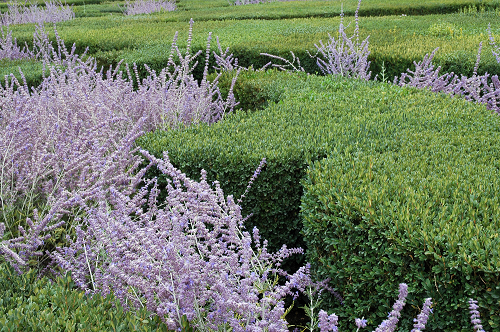Adding shrubbery to your home’s outdoor landscape is a wonderful way to frame your garden and border a winding path. One particularly popular way for doing both, or either, is with evergreen shrubs.
Benefits of Evergreen Shrubs

Evergreen shrubs are shrubs that can be a permanent fixture in your garden thanks to the fact that they will last all year.
In fact, evergreen shrubs like fatsia, lavender, and camellia can create beautiful flower displays and perfume-like scents throughout the year, even when everything else in your garden appears to have fallen dormant.
Evergreen shrubs will often be naturally variegated and create a colorful cascade of colors over your garden. Some shrubs are like trees and come with needled or broadleaf foliage.
Adding shrubs to your property will beautify the landscape all four seasons and provide a smooth transition between taller trees and the groundcover plants lining your walkway or garden.
Shrubs can be used for a number of different purposes beyond lining walkways and framing your garden as well.
Shrubbery can provide groundcover on slopes, buffer ambient noise from entering your home, and provide a breathtaking backdrop for your garden.
Boxwood Shrubs
One of the easiest-to-work-with types of evergreen shrub is boxwood shrubbery. Boxwood is hardy to zone 6, which essentially means that it will maintain its integrity no matter what nature throws at it.
Boxwood also fits most people’s initial idea of a shrub – boxwood has tiny, glossy foliage that can be hedged by Xeriscape’s landscaping experts into just about any desired shape.
Most homeowners like their boxwood shrubbery to be a few feet in diameter but, left to its own devices, boxwood can grow up to two dozen feet tall! This is a hardy shrub that will grow well in moderate sun and ligher shade.
Lavender
Lavender is a drought-tolerant plant that is a kissing cousin to mint, and each has a similar fragrance. Lavender, though, is a perennial shrub that has a lot of different size and color options to match your landscape.
There are actually four main types of lavender that homeowners in North America typically consider for their gardens: English lavender, Spanish lavender, Portuguese lavender, and lavandin.
English lavender owes its name to the English lavender trade of the 1700s and the fact that it smells so wonderful. English lavender can furnish homeowners with those variegated colors alluded to above: purples, violet, mauve, and mixtures of all three are afforded by English lavender.
Spanish lavender will come with pink and purple petals and have a unique pine scent. Portuguese lavender (a.k.a., Broadleafed lavender), on the other hand, will have paler purple leaves that are slightly larger.
Portuguese lavender can cross-pollinate with Engligh lavender, and both types are used in aromatherapy. The camphor in Portuguese lavender is good for attracting friendly insects into your garden and lending a sense of exotic variety and soothing color.
Lastly, lavandin might be a fancy name in this context since lavandin only means a cross between English lavender and Portuguese lavender. Lavandin produces sterile seeds but can grow in hot, arid climates and live through periods of sustained drought.
Camellia
Camellia is also a type of evergreen shrubbery, but the flowers of a blooming camellia are truly unique in certain species. There are more than 300 species of camellia, and approximately 3,000 hybrid species. Some camellia flowers are double.
Where does camellia work? Woodland gardens with dappled sunlight or gardens with slightly acidic soil are especially promising foundations for camellia.
Ask Xeriscape about the possibility of installing camellia shrubbery around your garden because the flowers come in a variety of beautifying colors: pinks, reds, yellows, and whites are common. Contact us for more information.